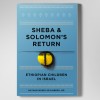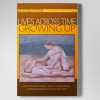Book Review: The Texture of Treatment: On the Matter of Psychoanalytic Technique. Herbert J. Schlesinger (2003) Analytic Press.
By Nathan Szajnberg , MD and Keren Segal, BA
(Originally published in Sichot, in Hebrew; Translation, N. Szajnberg)
Bruno Bettelheim’s fairy tale book – Use of Enchantment – was to be but one chapter of his last book on parenting. While each book stands on its own, knowing that one was born from the other enriches our understanding of both.
Herb Schlesinger’s The Texture of Treatment spent five decades analyzing and writing as if to prepare for this too brief, but glistening gem: like a diamond, it captures apparently mundane light in various facets and enhances its beauty. Schlesinger refracts and reflects the mundanities of everyday inner life in the consulting room and transforms this with clarity.
“In the beginning … was technique.” A provocative first line for a psychoanalytic text. It reflects the style of his work, a book that will be a marker in the history of psychoanalytic clinical practice. The writing reflects the thinking: crisp, concise, sincere, honest, yet twinged with humor. Even if one disagrees with Schlesinger, he writes with such clarity and substance that one knows where one stands.
This book is like Strunk and White’s classic, Elements of Style (1999), a remarkably thin book on writing: a beginner’s guide; a veterans’ reference. Follow its suggestions thoughtfully, critically, then you will write well. A great writer may go beyond its technique guidelines, but, likely, never ignore them. Its style is clear, lively, like a mountain spring.
A man of words, Schlesinger, invites us to think about our argot. “Consider transference … resistance, defense and development as … processes rather than substantives … as points of view.” Psychoanalytic phenomena are not “things.” but somethings that evolve, happen, about which we mutually reflect.
He reminds us of basics; rethink impasses, distinguish endings, quittings, stoppings, finishings, stalemates, terminations and the interminable.
The psychoanalytic relationship is “instrumental,” — there to accomplish something — rather than marriage, friendship or parenthood, which exist for their own sake. If we trust transference, then we not only facilitate its development, but also its “cure,” its resolution. For termination, Schlesinger distinguishes therapeutic gains from dependency. “The relationship, the essential vehicle for treatment, can also defeat it.” (E. & B.; p. 36).
Mini-terminations occur when the analysand has accomplished a significant piece of work. Indications include: slower work pace; lack of direction; slackened engagement; vagueness; lateness, cancellations, stopping or fantasies of stopping; waning purpose; transference shifts; reluctance to disclose; and most frequently, anxiety that the analyst wants to stop treatment.
But, these can also be signs of resistance. Our task — recognize the signs; clarify meanings.
He questions? Why treatment now? What could the analysand change to not need treatment now? What are the analysand’s capacities for treatment success: sensitivity versus obliviousness; engagement versus detachment; psychological-mindedness versus concreteness; curiosity versus indifference; externalizing versus internalizing; regression tolerance versus regression seeking; free-association versus plodding; humor versus literal-mindedness; activity versus passivity; liveliness versus stolidity; realistic life possibilities versus circumscribed circumstances. We have continua of these capacities: treatment develops greater freedom.
Schlesinger is alive to paradoxes. “Whatever… led the patient to the therapist’s office, once he gets there, his immediate problem is the therapist… alone in a room with a strange…He is anxious…”(E. & B.; 81). Or, “People generally seek treatment as a last resort…” The deck is stacked against the analysand; we need deal a better hand.
What landmarks exist for termination? 1. The capacity to make and sustain attachments; 2. Tolerating regressive pulls, including home- or heteroerotic wishes and defenses; 3. Tolerating separation, loss and surrendering fantasized gratifications.
Schlesinger addresses impasse, that uncomfortable stasis that is preferred to risky movement. Impasses (Wallerstein, 1967) can range from the doldrums to “noisy” psychosis. An impasse is an (unspoken) unsettled disagreement or argument. In the analysand, signs of an approaching impasse in include attacks of helpless/hopeless rage, feeling “in a bind,” being furiously disappointed, and guilty for failing (the analyst’s) expectations. The analyst’s contribution in quiet impasse is an error of omission; in noisy impasse, an error of commission or omission. Groundwork for impasses includes a dependent sexual transference or unanalyzed attachment. The impasse can be both a collusive repetition compulsion and an occasion for productive work.
The Texture of Treatment guides the analyst’s hand to sail out of the doldrums.
He defines technique and redefines it, like a theme with variations. He does this with “psychoanalysis,” “transference,” “interpretation” and “neurosis,” at times with a touch of surprise. “Technique… (is the psychoanalyst’s) responsibility .. to conduct a rational treatment” (p. 2); to raise the level of communication, decrease tension: transference-charged speech is loaded with action potential – to get the analyst to “do something” to, for, or about the analysand. How to handle such tension? 1. allow one’s self to be molded to action, but reflect; 2. speak electively from all positions of the fantasied parties. Technique’s major goal : promote the analysand’s activity (p. 278).
“Avoid semantic errors – questioning, obliqueness, subjunctives, qualifiers, passive voice: speech reflects our thinking. Stay a half-step behind the patient, and stay where the patient is” (258).
Listen. Avoid making nouns from verbs; skip conjunctions. Watch out for topic changes, vague references, shifts in emphasis, private language, opening phrases such as “I know…” “ I see…” “To be perfectly frank…” Schlesinger is a Yehudi Menuhin of psychoanalytic master classes.
Neuroses? “Resources… defending against unrealistic and anachronistic dangers.” ( 84). Many feel that neurosis is something they have rather than something they are doing. It projects one part of a conflict outside, then struggles with the “opponent.” (199).
Transference? It is conservative, keeps things the same (57). It is enactment. He prefers “metaphor” to the Latin transference; Ubertragung, is closer to the Greek metaphor (Szajnberg, 1986), transporting an image from one time/place to another.
I would say more, but to follow the laconic model of this book, I need say enough to reveal and yet not too much to lose the reader’s interest.
To the denouement. Interpretation either reduces a complicated phenomenon to simpler components, or reveals the complexity of an apparently simple manner. Or, both.
Schlesinger’s thinking is like old Volvos: solid, reliable, good for the long- term and equipped with gadgets to make long journey both safe and fruitful. It gets you safely where you really wanted to go.
Let’s end with Schlesinger’s most recent book, Promises, Oaths and Vows. “[The psychoanalyst promises] steadfastness, selflessness, patience and devotion. This promise is one sided. We expect nothing comparable of the new patient.” This is the foundation upon which Texture of Treatment is built.



